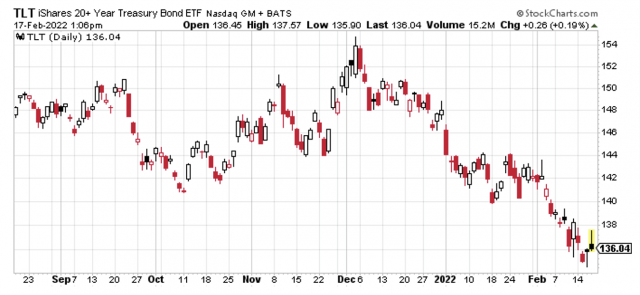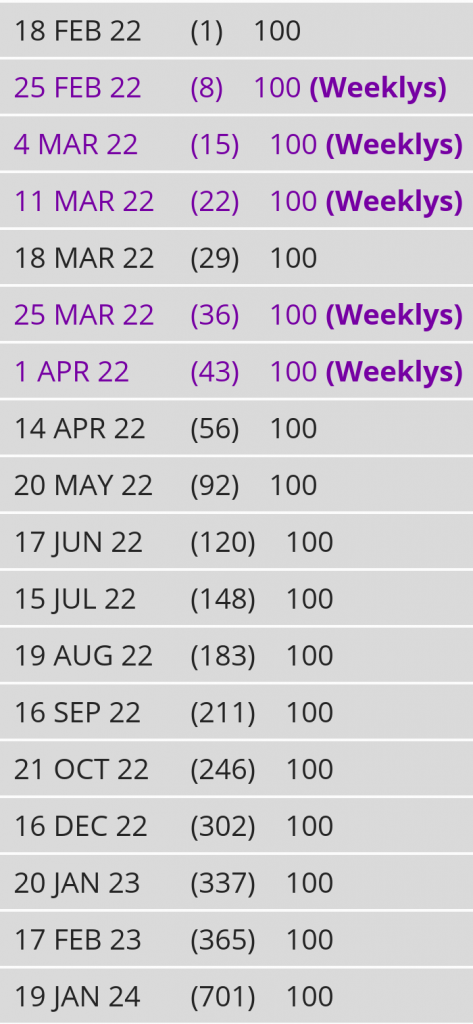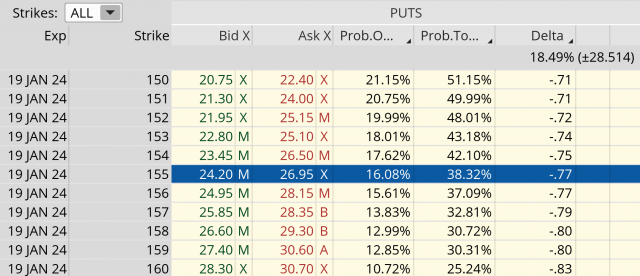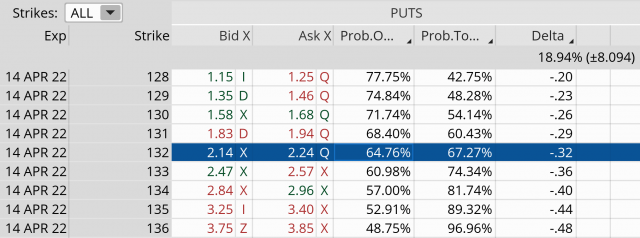Before I get started, don’t forget to sign up for my Free Weekly Newsletter for weekly education, research and trade ideas. I also wanted to thank everyone for all of the awesome support! The feedback has been wonderful and I’m just happy to know that you are finding my info helpful in your options-related trading endeavors.
Today I want to discuss a bearish income strategy that allows you to define your risk while simultaneously using less capital. The strategy is known as a poor man’s covered put.
Most traders either short stock, which has undefined risk and can be capital intensive, or simply buy puts. However, in my opinion, a poor man’s covered put options strategy is a far superior way to take on a bearish position while defining your risk and using significantly less capital.
The trade mechanics of a poor man’s covered put are similar to that of a poor man’s covered call, but instead of using calls we use puts.
I’m going to go through an example, step-by-step, so we have a sound understanding on how a poor man’s covered put works in the real world.
I’ll be using the iShares 20+ Year Treasury Bond ETF (TLT) as my underlying ETF, although you can use any stock or ETF with highly-liquid options.
Inflation is soaring and bonds hate inflation. Plus with a beta of -0.18, the underlying ETF is inherently a decent hedge on the overall market. The problem is, not many investors understand how to hedge or place a bearish trade on bonds. So regardless of whether you are currently bullish or bearish on the market, my hope is that the discussion below will help you become interested in the strategy. Because hey, there is always a bearish opportunity out there somewhere. Plus, knowing how to effectively hedge a portfolio with an array of different options strategies is always advantageous.
A poor man’s covered put is an inherently bearish options strategy. But again, rather than spend an inordinate amount of money to short at least 100 shares of stock, and have theoretically undefined risk, you have the ability to buy what is essentially a short stock replacement. The replacement? An in-the-money LEAPS put contract.
LEAPS, or long-term equity anticipation securities, are options with at least one year left until they are due to expire. The reason we choose to use LEAPS as our stock replacement is because LEAPS don’t suffer from accelerated time decay like shorter-dated options.
The initial barrier to entry when it comes to selling poor man’s covered puts comes is security selection. Simply stated, implied volatility (IV) is one of the main keys to picking the right stocks. Implied volatility tells us how much risk and return we should expect to see over a 20- to 45-day time frame, so that we can form a realistic plan for creating monthly income.
Next is the price of the security. Just because the IV of a stock fits within our range doesn’t mean that the stock works. We must be able to establish a position while maintaining proper position size in our overall portfolio.
My preference is to buy a LEAPS (put) with a delta of roughly 0.80 and sell puts with a delta between 0.20 and 0.40. The reason is I want to give myself the ability to make some decent returns on my LEAPS contract if indeed the stock pushes significantly lower. My goal is to initiate my poor man’s covered put position with an overall delta of approximately 0.50.

So again, rather than shorting 100 shares or more of stock, we only have to buy one LEAPS put contract for every 100 shares we wish to control.
If we go with the longest-dated expiration cycle in TLT we are left with the January 19, 2024 expiration cycle with 701 days until expiration. Remember, the reason we go out so far is to avoid any time decay, otherwise known as theta decay.
You can see the expiration cycles currently offered for TLT below.

Once I have chosen my expiration cycle, in this case the January 19, 2024, I then look for an in-the-money put strike with a delta of around 0.80.
When looking at TLT’s option chain I quickly noticed that the 155 put strike has a delta of 0.77. The 155 put strike price is currently trading for approximately $26.00. Remember, always use a limit order. Never buy an option at the ask price, which in this case is $26.95.

So, rather than spend $13,604 for control of 100 shares of TLT, we only need to spend $2,600. As a result, we are saving $11,004, or 80.9%. Now we have the ability to use the capital saved to diversify our premium or income stream amongst other securities if we so choose.
After we purchase our LEAPS put option at the 155 put strike, we then begin the process of selling short-term puts against our LEAPS. This will allow us to not only create a steady income stream, but also lower the cost basis of our overall position.
My preference is to look for an expiration cycle with around 30-60 days left until expiration and then aim to sell a put strike with a delta ranging from 0.20 to 0.40, or a probability of success between 60% to 85%.
As you can see in the options chain below, the 132 put strike with a delta of 0.32 falls within my preferred range.

We can sell the 132 put option for roughly $2.18.
Our total outlay for the entire position now stands at $2,382 ($2,600 – $218). The premium collected is 8.4% over 56 days. That’s a decent amount of premium, especially if you consider we are only going out 56 days.
And remember, the 8.4% is just the premium return, it does not include any increases in the LEAPS contract if the ETF pushes lower. Moreover, we can continue to sell puts against our LEAPS position until there is roughly 10 to 12 months of life left in the LEAPS, thereby generating additional income or lowering our cost basis even further.
As an aside, an alternative way to approach a poor man’s covered put if you are a bit more bearish is to buy two LEAPS for every put sold. This will increase the delta of your overall position and allow you to benefit from the additional downside past your chosen short put strike, yet still participate in the benefits of selling premium.
Regardless of your approach, you can continue to sell puts against your LEAPS as long as you wish. Whether you hold a position for one expiration cycle or 12, poor man’s covered puts give you all the benefits of a covered put for significantly less capital.
Poor Man’s Covered Put Trade:
- Buy iShares 20+ Year Treasury Bond ETF (TLT) January 19, 2024 155 LEAPS put contracts for roughly $26.00
- Sell iShares 20+ Year Treasury Bond ETF (TLT) April 14, 2022 132 puts (56 days until expiration) for $2.18, or $218 per contract
Static or Return on Premium (does not include any capital gains): 8.4% over 56 days, or 50.3% annually
That’s right: We have the potential to create 8.4% every 56 days, or approximately 50.3% in premium a year using TLT.
As always, if you have any questions, please do not hesitate to email me or post a question in the comments section below. And don’t forget to sign up for my Free Weekly Newsletter for weekly education, research and trade ideas.

